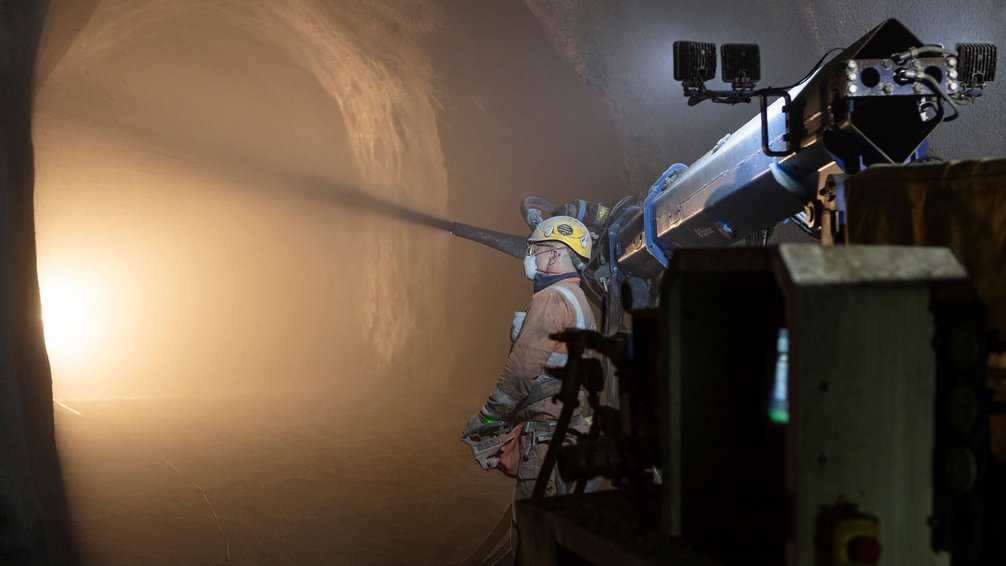Delicate fibres for rock solid reinforcement

Safety first. In the wake of a series of serious accidents, the Swiss authorities have significantly increased safety standards for tunnels in recent decades. As a result of the stringent new rules, Implenia was commissioned to build a new safety tunnel for the Crapteig road tunnel between Chur and San Bernardino.
Drilling through rock is not easy. It is extremely important that the hole is made safe as soon as it is bored. Traditionally, this is done by fixing steel mats to the surface of the exposed rock and coating it with shotcrete. But Implenia employed an innovative process for the first time at the new two-kilometre tunnel in the Swiss Alps. The company tamed the enormous forces of the mountain with hair-thin plastic fibres.
Its work in the mountains was completed in 2022. “This new process using plastic fibres has several advantages,” is Heinz Berni’s approving assessment. “First of all, it is more durable because plastic does not corrode.” It is also safer because there is no need to install reinforcement mats, so workers are less likely to be hit by chips of rock. Consequently, Implenia’s tunnelling engineer is enthusiastic about the new method.
It is also significantly better for the environment because less material is used: the fibres replace heavy steel reinforcing elements that require a huge amount of energy to produce. By using fibre-reinforced concrete to secure the Crapteig tunnel, Implenia has reduced its CO2 emissions by two-thirds compared to the traditional method.
This climate friendly aspect is also evident in the production of tunnel segments. In France, Implenia has built its own production plant to pre-fabricate the tubbing rings used on the huge metro construction sites in Paris. These precisely fitting concrete elements are made using fine steel fibres instead of the usual heavy reinforcing elements.
Calculations show that conventional tubbing production generates more than one hundred kilogrammes of CO2 emissions per ring. The figure for fibre-reinforced rings is only 40 kilogrammes. They may be delicate things, but fibres can have a major impact on the sustainability of construction projects.
Je dünner desto stärker
Bereits in den zwanziger Jahren des letzten Jahrhunderts entdeckten Materialwissenschafter, dass Werkstoffe in Form von Fasern in Faserrichtung eine vielfach grössere Festigkeit aufweisen als das gleiche Material in anderer Form. Erstaunlicherweise stellten sie auch fest, dass je dünner eine Faser, desto grösser ihre Festigkeit ist. Diese Erkenntnis findet mit neuen Technologien und einer Vielzahl von verwendeten Materialien auch in der Bauwirtschaft immer breitere Anwendung.





